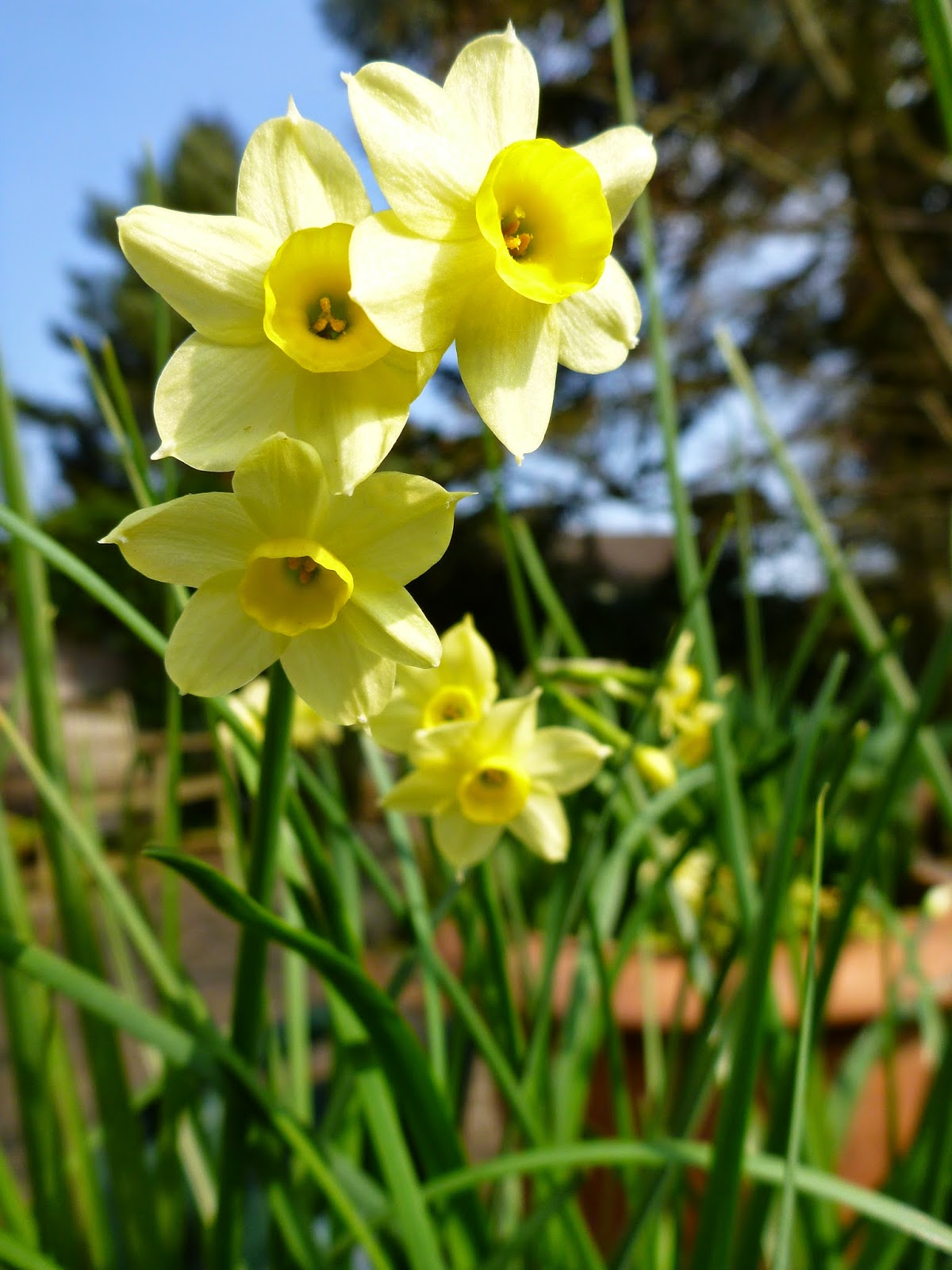 |
| Fritillaria meleagris |
The bulb that we most look forward to in spring is Fritillaria meleagris - the snake's head fritillary. We have some planted in our small wildflower patch, although I think it is really a little too dry for them there. They seem to thrive better in our sheltered semi-shaded bed planted amongst ferns, epimediums, meconopsis, dicentra and dodecatheon. I planted about 200 bulbs and they seem to be slowly multiplying.
 |
| The first time we have seen a Fritillaria meleagris with four heads on one stem |
Apart from a bed of Narcissus poeticus recurvus (the pheasant's eye narcissus), which is tall and wafts wonderful scent as you walk into the garden, we prefer growing the dwarf selections of narcissi.
 |
| Narcissus poeticus recurvus |
 |
| Narcissus Minnow |
 |
| Narcissus twinkling yellow |
I used to dislike Muscari (grape hyacinth) because my experience was that they produced lots of leaves and very few flowers. However, I have since discovered that there are many varieties that are well behaved and a valuable addition to the spring border. They seem to contrast beautifully with the colours of any of the narcissi and species tulips.
 |
| Muscari |
Another recent discovery are Ipheion, which for my parents in the north of England have flowered all winter. They had not previously caught my eye, but a new planting of Ipheion Froyle Mill has me hooked.
 |
| Ipheion Froyle Mill |
Last but not least, the tiny blue stars of Chinodoxa luciliae (glory of the snow) are real work horses. Cheap to buy in large numbers (and I suggest that you buy more than you think you need - I found that 300 gives a good drift to start with) and they multiply quickly. They look lovely under shrubs and cope easily with sun or semi-shade.
 |
| Chinodoxa luciliae |
All the bulbs I have mentioned are available to buy in late summer and should be planted in September and October. I start thinking about my bulb orders now, because now I can see the gaps in the borders that I want to fill. I make notes of the locations and possible colours. I also take photographs of the beds, as by autumn it will look very different and I probably won't be able to see any gaps. If planting is too tricky in autumn, I plant the bulbs in plastic pots left outside over winter and transplant them into the garden in early spring.
Also of interest in the garden at the moment - ranunculus ficaria, members of the buttercup family. These tiny plants emerge in spring with small mounds of foliage and flower their hearts out for a few weeks before disappearing underground for summer. I find them really useful edging plants for spring. They seem to cope with any situation and seed themselves around, which for me is a bonus.
 |
| Ranunculus fried egg |
Our current to-do list
1. Deadheading narcissi - As they finish I just snap of the seed head and leave the stalk and leaves to die back naturally.
2. Planting new plants - I'm attending plant fairs and visiting gardens open through the NGS and acquiring wonderful new plants. They all need to find homes as soon as possible so they can get established.
3. The lawn - Pete's job! He has done the first cut of the year and has some patches to fill with soil and new seed.
4. Weeding - when everything else starts to grow, so do the weeds. I try and remove them little and often, because spending hours weeding is not much fun.
No comments:
Post a Comment